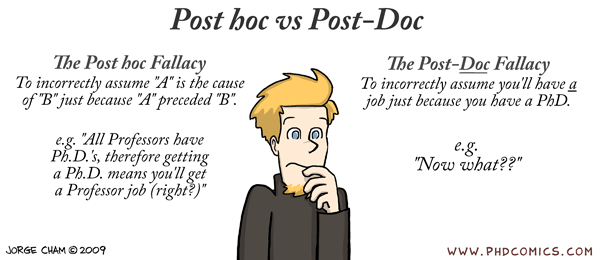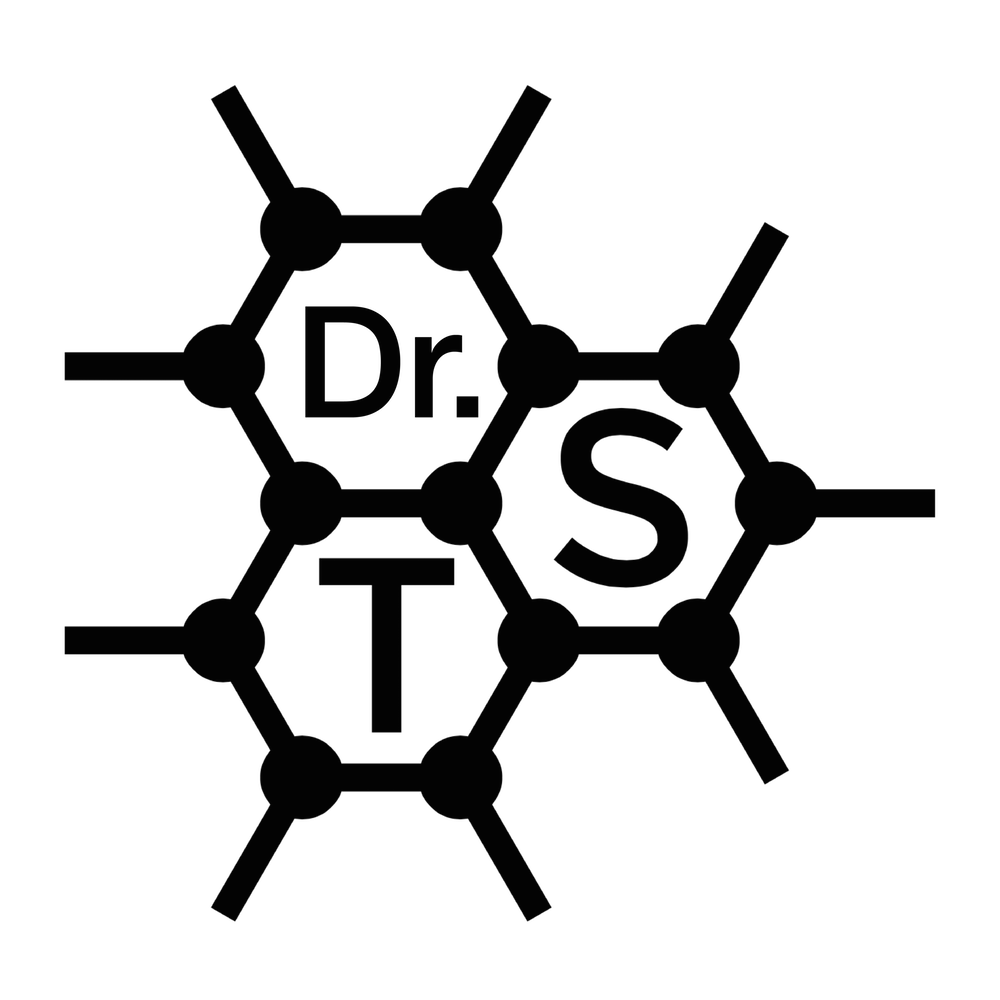Securing a postdoc grant (VP2)
/ If you didn't catch it already, read the first part of this post series.
If you didn't catch it already, read the first part of this post series.
You have completed your PhD, and are now trying to figure out what to do next. Much has been written how there simply isn't enough academic positions for number of PhD's that are trained, and certainly that is a real possibility that you (and I!) should be willing to face. Alternative career paths are gaining more prominence, and certainly there are advantages to working in an industry where your degree is relevant, or in journalism (my #2 preference would probably be to work for some place like the Nature Publishing Group).
However, let's say you are like me and find academic freedom and the individual pursuit of a scientific career irresistible. There are some good resources for tips on what you should consider. As I mentioned in the first post, doing a postdoc period abroad is generally considered a de facto requirement for aspiring academics. While our field in Finland has the fortunate situation that most PhDs get rather secure funding through to graduation, after the PhD you are typically responsible for securing your own funding. That's where writing and applying for grants comes in.
While it's always a good idea to explore any and all options in your network (does that Japanese professor you've had the pleasure of visiting have a project that could fund your postdoc? Does your advisor know of any open positions? etc), writing your own application for a postdoc grant can be the best option, and something you should really consider doing in any case. It does take a fair amount of time and there is much to criticize with the system, but since it's what we are stuck with for now you'd better get used to – and good at – it.
The best way to hear about potential grants are naturally your slightly-more senior peers, who have (hopefully!) just gone through the process with success. Additional good resources are your University/Department mailing lists and notice boards, research support services (or their equivalent), information events organized by funders, and any funding tools your University might use (e.g. Research Professional). Personally I found about all of the grants I applied for via the grapevine.
In the last 1.5 years, I've applied for three major and two supporting mobility grants. The major grants – those that would completely fund my salary and some research costs – I applied for were the Academy of Finland postdoctoral researcher grant (twice), the European Union Marie Curie Programme's Intra-European Fellowship for Career Development (MC-IEF), and the Austrian research funder FWF's Lise Meitner programme incoming postdoc grant. Additionally, I applied for mobility money (funding to help cover the costs of moving and living abroad) from the Foundations' post doc pool (a joint call for all foundations' postdoc funding in Finland) and the Teknologiateollisuuden 100-vuotisjuhlasäätiö (in Finnish; basically an industry-oriented foundation).
Sometimes it takes a long time for the results to come (Academy of Finland's 8 months can be pretty frustrating), and in the meantime, you should consider writing more applications. While no one will give you a grant you didn't apply for, it's always possible to turn down a grant in the unlikely case you receive more than one overlapping grant. Due to the long waiting periods, it's also quite common to be keeping the topic on the back burner in the meanwhile and getting results already before the start of the grant.
The results from the Marie Curie call came first, arriving by email late November last year. A look at the Evaluation Summary Report (ESR) quickly revealed that while I was over the thresholds (score limits that have to be exceeded to be eligible), I clearly did not score high enough to have a chance of getting the grant. As stated in the information letter accompanying the reviews: "For information, in this particular call it is estimated that funds will be available to finance around 614 projects out of the 2938 that have passed all evaluation thresholds." It's a huge and highly competitive call.
For some reason, it took the FWF longer to handle my application for the Lise Meitner grant than we expected. This turned out to be a blessing in disguise, since I was visiting Vienna in the beginning of March and sitting in the office with the people I will be working with when they suggested checking the status of the call – and finding out that I had received the grant! There had been no official letter sent yet, and the only way of finding out about the grant was putting one's name in the FWF project search form, and seeing the below hit there:
| M1497 Nitrogen and phosphorus doped single-wall carbon nanotubes | ||
| Principal investigator | SUSI Toma | |
| Address | Strudlhofgasse 4, 1090 Wien, Österreich | |
| University / Research institution | Fakultät für Physik Elektronische Materialeigenschaften, Universität Wien | |
| Approval date | 04.03.2013 | |
| Start | not yet begun | |
| Scientific field(s) | 1210 Solid state physics (25,00%) 1245 Nanotechnology (25,00%) 1250 Materials physics (25,00%) 1901 Electron microscopy (25,00%) | |
| Keywords | Carbon nanotubes, Nitrogen Doping, Phosphorus Doping, Spectroscopy, Materials Processing, DFT | |
Needless to say, it was a really, really good feeling to finally know for sure that I would be able to continue my research (with my own research plan and funding, no less!) for the next 2 years; not to mention knowing where I would be living :D I had the excellent chance to celebrate this with my future colleagues and their families a couple of days later.
After returning to Finland, I immediately notified the Postdoc pool coordinator that I had received the grant to cover my salary, about a week before they were due to announce the results of the call. In the original pool application, I had asked for salary costs as well since I didn't know at the time if I would have any other source of salary. Thus I changed my application to only apply money for mobility costs. This allowed me to ask for significantly less money, and for the entire 2 year period.
I'm not quite sure what role these developments played, but a week later the results came out and I received notice that the Finnish Cultural Fund had decided to support my pool application to the tune of 8000 euros – less than the 20k I had asked for (which included money for rent and living costs), but just sufficient to cover all of the moving costs. This additional money will make it very easy for me to hire a professional moving company, and pay the agent fees etc for the apartment in Vienna.
Thus when the Academy of Finland results finally came in early May, I had already accepted the Lise Meitner grant, and thus would had been in a bit of conundrum about what to do if they had also decided to fund my application. "Luckily" this was not the case, and I got a rejection from them. Interestingly, my scores were significantly lower than in the first application to them a year earlier, even though I had done a great deal of polishing and tuning of the proposal in the meanwhile. Goes to show how much the referees matter in getting grants... which is an unfortunate reality in this game.
So was my first real trial-by-fire of securing an independent postdoc position in an excellent research environment happily concluded! Now I'll have the actual pleasure of doing the research that I promised to do (and then some; see below :) and (hopefully) not start concentrating on applying for the next round of grants just yet.
In the next posts in this series, I'll share my thoughts on how to choose the place for a postdoc: what professional and social considerations might be important? I'll also cover the practicalities of my move, and write updates on settling in to my new home city of Vienna.




